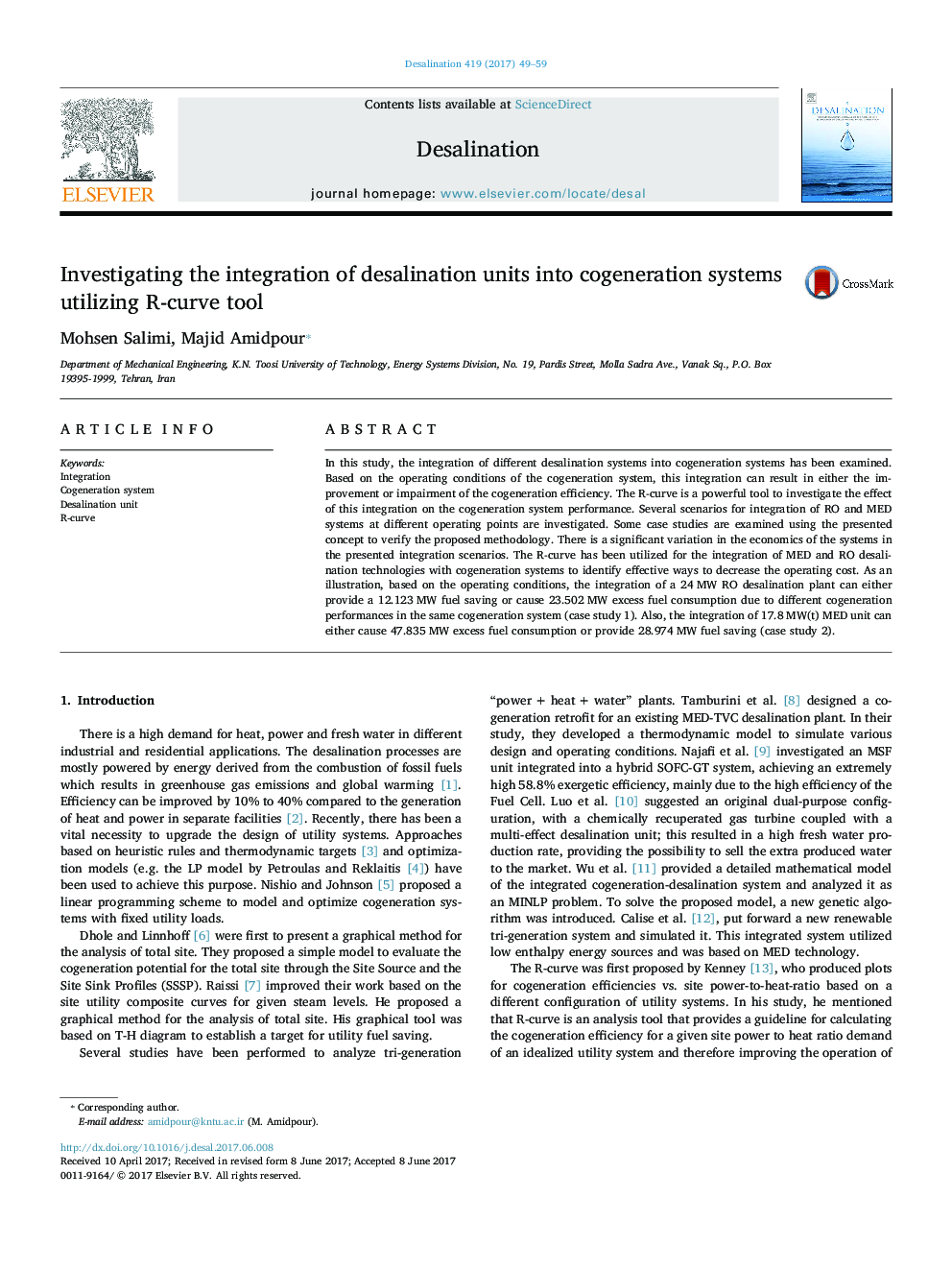| Article ID | Journal | Published Year | Pages | File Type |
|---|---|---|---|---|
| 4987683 | Desalination | 2017 | 11 Pages |
Abstract
In this study, the integration of different desalination systems into cogeneration systems has been examined. Based on the operating conditions of the cogeneration system, this integration can result in either the improvement or impairment of the cogeneration efficiency. The R-curve is a powerful tool to investigate the effect of this integration on the cogeneration system performance. Several scenarios for integration of RO and MED systems at different operating points are investigated. Some case studies are examined using the presented concept to verify the proposed methodology. There is a significant variation in the economics of the systems in the presented integration scenarios. The R-curve has been utilized for the integration of MED and RO desalination technologies with cogeneration systems to identify effective ways to decrease the operating cost. As an illustration, based on the operating conditions, the integration of a 24Â MW RO desalination plant can either provide a 12.123Â MW fuel saving or cause 23.502Â MW excess fuel consumption due to different cogeneration performances in the same cogeneration system (case study 1). Also, the integration of 17.8Â MW(t) MED unit can either cause 47.835Â MW excess fuel consumption or provide 28.974Â MW fuel saving (case study 2).
Related Topics
Physical Sciences and Engineering
Chemical Engineering
Filtration and Separation
Authors
Mohsen Salimi, Majid Amidpour,
